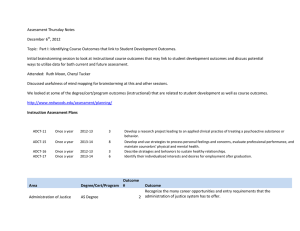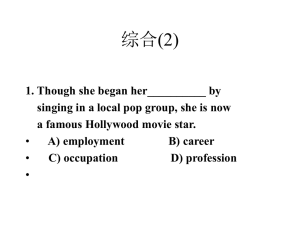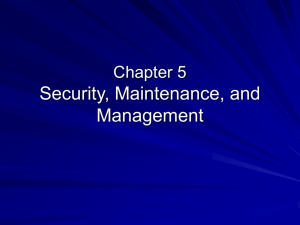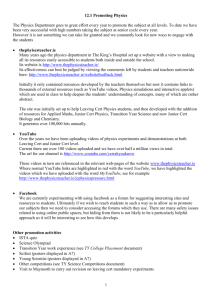US‐CERT A CSIRT Process Model for Improving Information Sharing &
advertisement
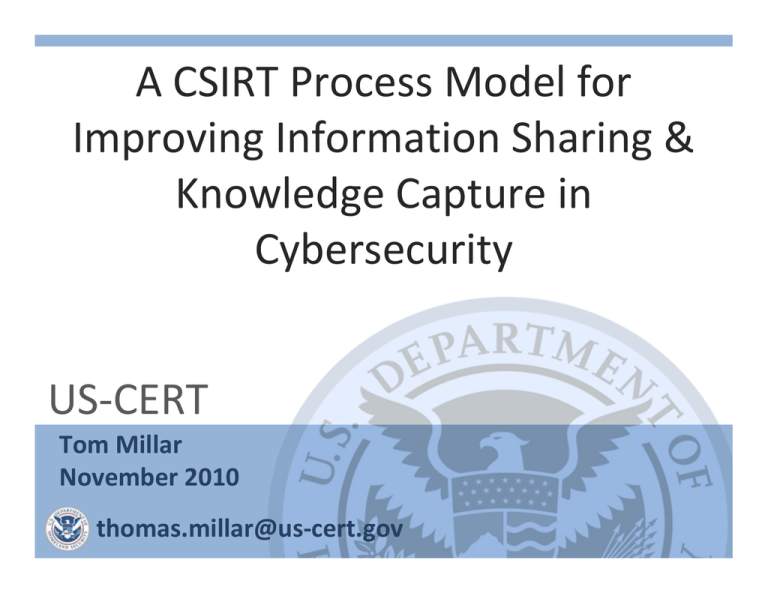
A CSIRT Process Model for Improving Information Sharing & Knowledge Capture in Cybersecurity US‐CERT Tom Millar November 2010 thomas.millar@us‐cert.gov Problem Information sharing is a priority for all cyber security organizations – not only between internal functional groups, but externally with partners both public and private, at home and abroad. However, increased information sharing is of little benefit without a shared perspective and vocabulary among the participants. US‐CERT Starting Point: Howard & Longstaff This 7‐part taxonomy appears in “A Common Language for Computer Security Incidents” from 1998, by John Howard & Tom Longstaff, published by Sandia National Labs. US‐CERT One Implementation: The IODEF • Tool and Vulnerability become Method • Action becomes EventData • Target is part of both Contact (the PoC) and EventData (the system) • Unauthorized Result becomes Assessment 5 of the 7 parts from Howard & Longstaff’s taxonomy were adopted as data element classes in the IETF’s Incident Object Definition Exchange Format, an XML schema for cyber incident reporting. US‐CERT Map Taxonomy to Process Coordinate Detect Action EventData Target Contact/ System Assess Analyze Result Impact Tool/Vuln Method US‐CERT …and Rediscover the OODA Loop Detect – Coordinate & Analyze – Assess… That’s Nice, But: Now what? US‐CERT Extending the Loop: Detect – Coordinate – Analyze – Assess Action EventData A O Action EventData Target Contact/ System D O Tool/Vuln Method Target Contact/ System O D Tool/Vuln Method Result Impact O A Result Impact Monitor – Mitigate – Determine – Confirm Chaining two “OODA” loops together gives us a better picture of a complete incident management process from identification to recovery, and most importantly, using the same language throughout US‐CERT Extending the Data Model: Detect – Coordinate – Analyze – Assess Action: CEE IDMEF IPFIX Target: CPE CCE XCCDF OCIL ARF Tool/Vuln: CVE, CWE CAPEC MAEC OVAL OpenIOC IEEE ICSG Result: ARF/ IODEF? Monitor – Mitigate – Determine – Confirm Existing and emerging specifications could be wrapped in a larger IODEF document type – when completely “filled out” in the course of the process loop, we begin capturing more and more reusable knowledge US‐CERT Organizational Challenges: John Bodnar’s “Warning Analysis For The Information Age” describes how nested or chained OODA loops function in organizations. In the above example, “Intelligence” might be a CERT/CSIRT/SOC; “Operations” then becomes the NOC/ITS team. Patch this! Block that! US‐CERT Differences in Octave/Register Ops DeciHz (Fractions of Minutes) IT/Sec MilliHz (Minutes to Hours) Mgmt MicroHz (Hours to Days) Policy NanoHz (Days to Months) Each layer in an organization has their own loop frequencies. Business Ops act at Push‐To‐Talk speed; IT & Security act at E‐mail speed; Management & Policy may act at Memorandum speed or slower! US‐CERT Conclusions Detect – Coordinate – Analyze – Assess Action EventData A O Action EventData Target Tool/Vuln Contact/ Method System O D D Result Impact O O Target Tool/Vuln Contact/ Method System Ops DeciHz (Fractions of Minutes) IT/Sec MilliHz (Minutes to Hours) Mgmt MicroHz (Hours to Days) Policy NanoHz (Days to Months) A Result Impact Monitor – Mitigate – Determine – Confirm For information sharing to be minimally useful, we have to speak a common language (a language is more than a vocabulary). For information sharing to be optimal, we have to understand how each part of that language plays its role in the greater cyber security process: incident identification, mitigation, recovery, knowledge capture and ‐ eventually ‐ developing safer code and protocols. US‐CERT
